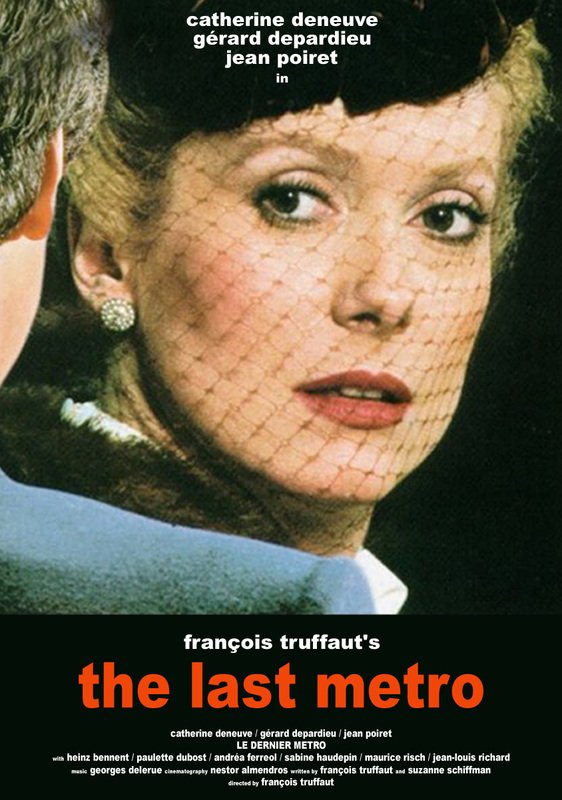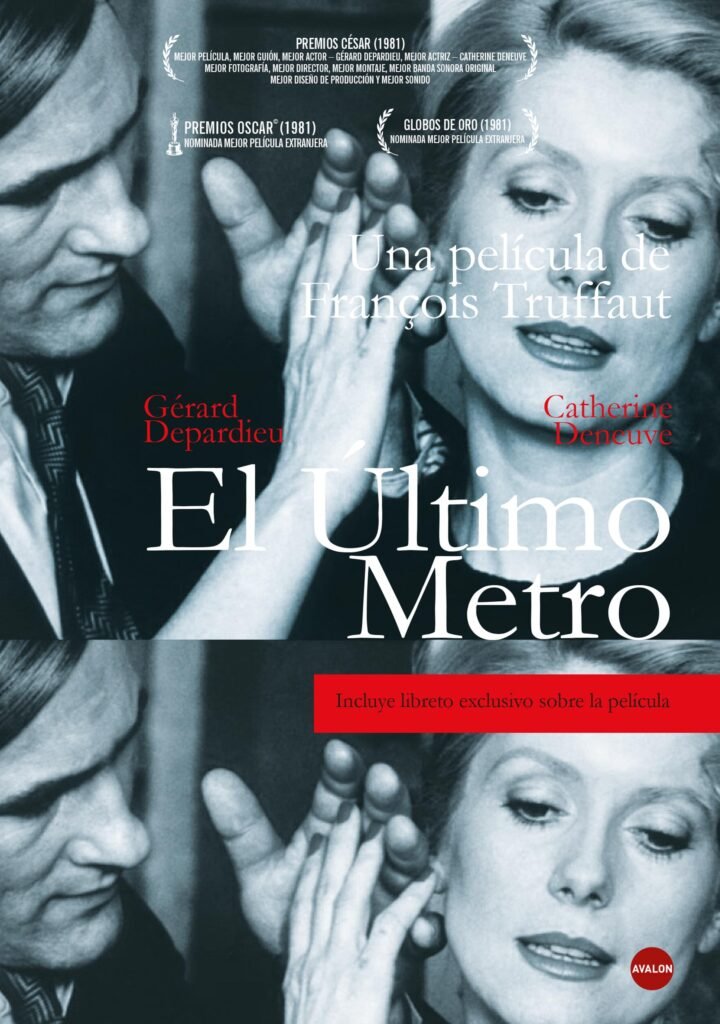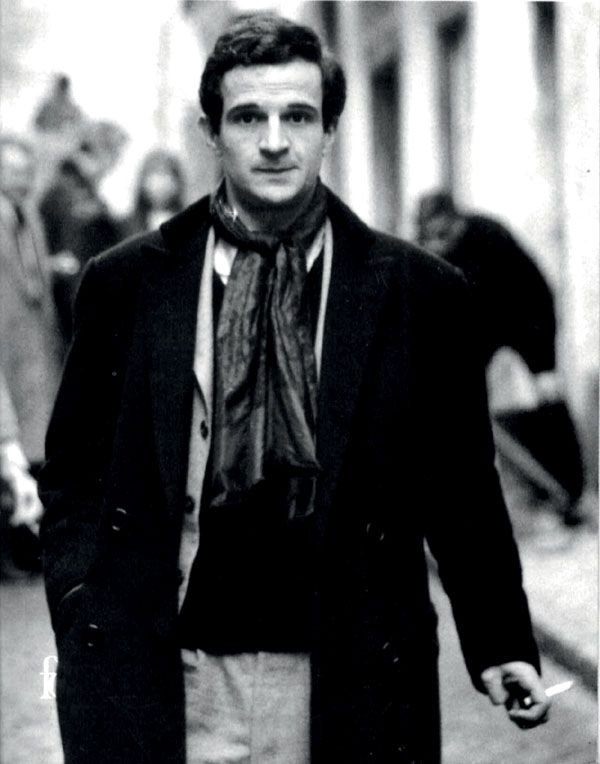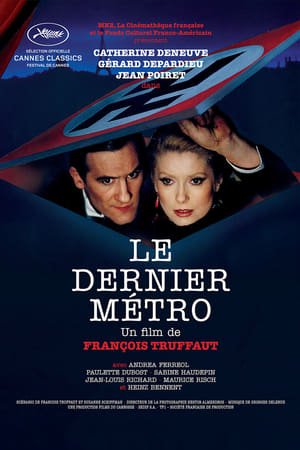The Last Metro (1980): art as an act of resistance | el arte como acto de resistencia
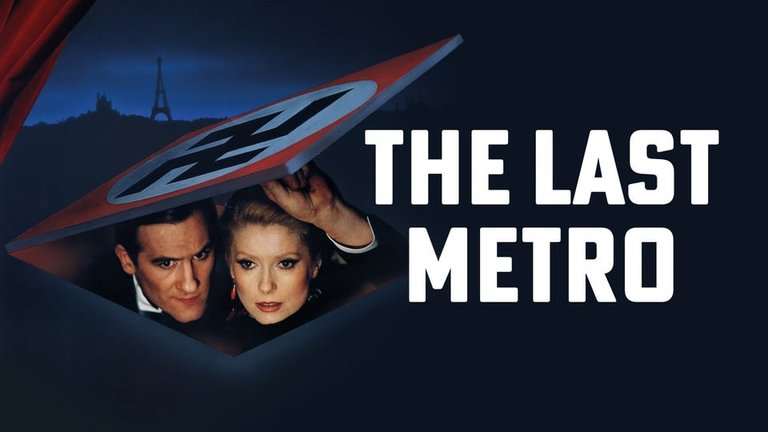
When we travel anywhere we take basic luggage with what we need: clothes, toiletries and a few other things. But we also take our passions and hobbies with us. Whoever reads will obviously carry books; Those who enjoy dancing will try to dance there in that new place and those who love movies will either take a movie and series app on their phone, or watch movies on the plane or look for a movie screening in the city they are traveling to. And during my vacation in another country I looked for precisely the latter and got a wonderful gift.
Cuando viajamos a cualquier lugar nos llevamos un equipaje básico con lo necesario: ropa, artículos de aseo y algunas cositas más. Pero nos llevamos también nuestras pasiones y aficiones. Quien lee, llevará libros obviamente; quien disfruta bailando procurará bailar allá en ese lugar nuevo y quien ama el cine o bien se llevará alguna app de películas y series en su teléfono, o verá películas en el avión o buscará alguna función de cine en la ciudad a la que viaja. Y durante mis vacaciones en otro país busqué precisamente esto último y conseguí un maravilloso regalo.
The Liberty Palace, located in Buenos Aires, houses the Kirchner Cultural Center and on a Sunday afternoon in December they screened - free of charge - a double feature of films by renowned French director François Truffaut which I attended. The first film, which I didn't like very much, was The Story of Adele H., a biographical drama about the life of Victor Hugo's passionate daughter. It's not that the movie wasn't good, it's just that I found it hard to empathize for a character who made a lot of mistakes and almost always made bad choices, hurting herself most of all, but also other people. I feel she seemed very capricious to me. Although I must admit that she was persistent. After that film and after a 15 minute intermission, what would be the last film I saw last year and one of the last films the Frenchman would direct in his life, The Last Metro, was screened. Set in 1942 during the Nazi occupation of Paris, the film revolves around a group of actors trying to pull off a play. In times of crisis like these, culture is often a refuge, not only emotionally but also physically. In the municipal theaters, where the performances were free, people used to enter to take shelter from the winter cold and also take advantage of nourishing the spirit and the senses with a play, a ballet or a concert, so that, despite the war and living in a city occupied by a foreign power, going to the theater was like entering a small bubble and escape from reality, even if only for a moment.
El Palacio Libertad, ubicado en Buenos Aires, alberga el Centro Cultural Kirchner y la tarde de un domingo de diciembre proyectaron - de manera gratuita - una función doble de películas del reconocido director francés François Truffaut a la cual asistí. El primer film, que no me gustó mucho, fue The Story of Adele H., un drama biográfico sobre la vida de la apasionada hija de Víctor Hugo, al autor de Les Misérables. No es que la película no haya sido buena, sino que me costó empatizar por un personaje que cometió muchas equivocaciones y que casi siempre eligió mal, perjudicándose sobre todo a ella misma, pero también a otras personas. Siento que me pareció muy caprichosa. Aunque debo reconocer que era persistente. Luego de esa película y tras un intermedio de 15 minutos, se proyectó la que sería la última película que vi el año pasado y una de las últimas que dirigiría el francés en su vida, The Last Metro. Ambientada en el año 1942 durante la ocupación nazi de París, la película gira en torno a un grupo de actores que trata de sacar adelante una obra de teatro. En tiempos de crisis como esos, la cultura suele ser un refugio, no sólo emocional sino también físico. En los teatros municipales, en donde las funciones eran gratuitas, las personas solían ingresar para resguardarse del frío del invierno y además aprovechar de nutrir el espíritu y los sentidos con alguna obra, un ballet o un concierto, por lo que, a pesar de la guerra y de habitar una ciudad ocupada por una potencia extranjera, acudir al teatro era como entrar en una pequeña burbuja y escapar de la realidad aunque fuera por un momento.
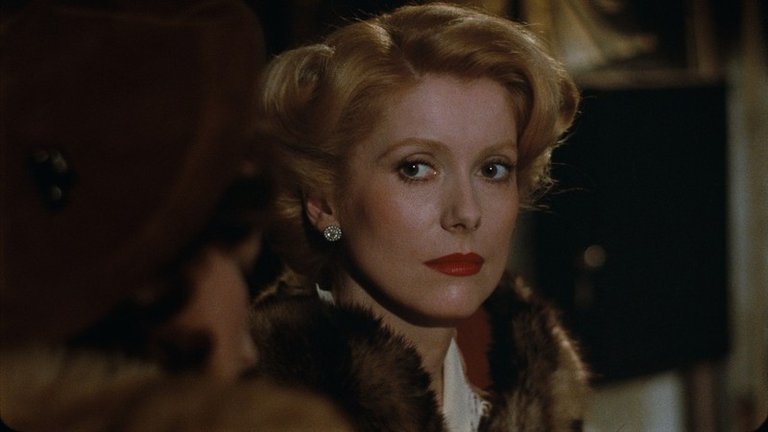
However, that doesn't mean that it was easy to carry out these shows because there were many obstacles: censorship, shortages, the conditions imposed by the occupiers, of which one of the first was to expel any Jews who had anything to do with with those spaces. Directors, actors, scriptwriters, and even cleaning staff or ushers... if they were Jews, they had to be fired, expelled from the country or detained for interrogation and subsequent imprisonment. That is the reason why director Lucas Steiner leaves Paris, leaving his wife Marion and his assistant director in charge of the theater.
Sin embargo, eso no quiere decir que fuese fácil llevar adelante estos espectáculos porque eran muchos los obstáculos: la censura, el desabastecimiento, las condiciones impuestas por los ocupantes, de las cuales una de las primeras fue expulsar a los judíos que tuvieran algo que ver con esos espacios. Directores, actores, guionistas, e incluso personal de limpieza o acomodadores... si eran judíos, tenían que ser despedidos, expulsados del país o detenidos para interrogatorio y posterior encarcelamiento. Esa es la razón por la que el director Lucas Steiner abandona París, dejando a cargo del teatro a su esposa Marion y a su asistente de dirección.
Marion is not only not Jewish, but a woman who has class, elegance and is respected by society and the city authorities. Of course, there are some men interested in courting her in the director's absence, but Marion has neither the time nor the desire to be courted. She must find actors and actresses, buy things on the black market, evade censorship, be cordial with Nazi officials so that they don't take away the theater, but secretly and in her own way, the woman is also facing the occupation. And she doesn't do it alone. I won't say more about this so that you can discover for yourselves what happens when you watch the film, but I believe that the central theme of this story - which has many - is the power and necessity of art in difficult times. In the middle of a war, in the most extreme poverty, the most absolute loneliness, suffering from cold, fallen exhausted on the ground, in those moments when the body gives way and the soul seems to be unable to resist any longer, a song, a melody, a poem is enough, to give us energy and hope. Think about how many great works of art, paintings, plays, collections of poems, sculptures, have been born in the midst of sadness and suffering. Making art, being an artist, is not just a profession linked to something that looks pretty, but it means something. And at the same time, art has been a way of resisting and fighting against oppression and totalitarianism. Let's think about the texts of Solzhenitsyn or Kundera, the works of Anselm Kiefer, the essays of Hannah Arendt, these are some examples of people who have used their art and their craft against the darkness of the times.
Marion no sólo no es judía, sino que es una mujer que tiene clase, elegancia y que es respetada por la sociedad y las autoridades de la ciudad. Claro que hay uno que otro hombre interesado en cortejarla ante la ausencia del director, pero Marion no tiene tiempo ni ganas de ser cortejada. Debe conseguir actores, actrices, comprar cosas en el mercado negro, evadir la censura, ser cordial con los oficiales nazis para que no le quiten el teatro, pero secretamente y a su manera, la mujer también está enfrentando la ocupación. Y no lo hace sola. De esto no diré más para que ustedes mismos descubran lo que ocurre al ver la película, pero creo que el tema central de esta historia - que tiene muchos - es el poder y la necesidad del arte en tiempos difíciles. En medio de una guerra, en la pobreza más extrema, la soledad más absoluta, padeciendo frío, caído exhausto sobre el suelo, en esos momentos en que el cuerpo se doblega y el alma parece no poder resistir más, basta una canción, una melodía, un poema, para insuflarnos energías y esperanzas. Piensen en cuántas grandes obras de arte, cuadros, obras de teatro, poemarios, esculturas, han nacido en medio de la tristeza y el sufrimiento. Hacer arte, ser artista, no es sólo una profesión ligada a algo que se ve bonito, sino que significa algo. Y a su vez, el arte ha sido una manera de resistir y de luchar contra la opresión y el totalitarismo. Pensemos en los textos de Solzhenitsyn o de Kundera, las obras de Anselm Kiefer, los ensayos de Hannah Arendt, son algunos ejemplos de personas que han empleado su arte y su oficio contra la oscuridad de los tiempos.
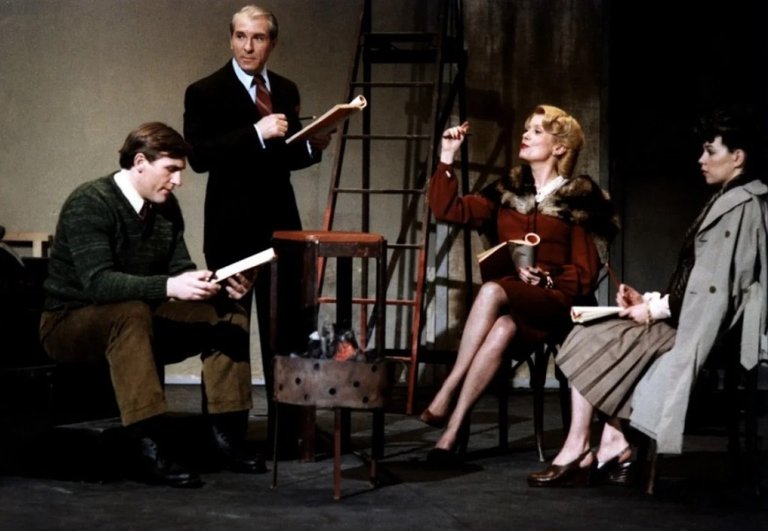
With a cast that includes Catherine Deneuve, Gérard Depardieu, Heinz Bennent, Jean Poiret, Andréa Ferréol and Paulette Dubost, among others, and a track record that includes a ton of nominations and the not inconsiderable number of 10 Cesar Awards, The Last Metro is a good recommendation for those who enjoy stories set in World War II, for those who love French cinema or for admirers of François Truffaut who, of all his extensive filmography, haven't seen this film.
Con un elenco que incluye a Catherine Deneuve, Gérard Depardieu, Heinz Bennent, Jean Poiret, Andréa Ferréol y Paulette Dubost, entre otros, y un palmarés que incluye un montón de nominaciones y la nada despreciable cantidad de 10 Premios Cesar, The Last Metro es una buena recomendación para quienes disfrutan las historias ambientadas en la Segunda Guerra Mundial, para quienes aman el cine francés o para los admiradores de François Truffaut que, de toda su extensa filmografía, aún no hayan visto esta película.
I'm not an expert in French cinema, much less in Truffaut's career, but from the little I've seen and read, I have understood that he was a very important world figure, especially in the sixties and seventies, and that he had films of different styles, from biographical dramas such as the aforementioned The Story of Adele H.; to the stories of adolescence and initiation like the iconic Les 400 Coups that earned him the Best Director award at Cannes; or that tribute to cinema within cinema that is La Nuit américaine and that earned him the Oscar award for Best Foreign Language Film; the adaptation of Ray Bradbury's dystopian classic Fahrenheit 451, his celebrated L'Enfant sauvage, or what so far is my favorite Truffaut film I've seen, Jules et Jim, a love triangle between two men and a woman which is at the same time an ode to friendship and a reflection of how easy it is to love and the complexity of human relationships. I think it's worth reviewing the work of this director, as well as that of his compatriots Jean-Luc Godard, Jean Renoir or the very talented Agnès Varda; If you are up for it, I suggest you start with the film in this post, The Last Metro, which because it's more recent is in color, or else look for pieces in black and white like Jules et Jim, Breathless or Cleo from 5 to 7. They are very good movies and great stories that last over time and are not found in common places like Netflix or Disney+; Have you seen any Truffaut movies? Who is your favorite French film director? I read you in the comments.
No soy experto en cine francés, mucho menos en la trayectoria de Truffaut, pero de lo poco que he visto y leído, he entendido que fue una figura mundial muy importante, sobre todo en los años sesenta y setenta, y que tenía películas de diferentes estilos, desde los dramas biográficos como la ya referida The Story of Adele H.; hasta las historias de adolescencia e iniciación como la icónica Les 400 Coups que le valió el premio a Mejor Director en Cannes; o ese homenaje al cine dentro del cine que es La Nuit américaine y que le valió el premio Oscar a Mejor Película de habla no inglesa; la adaptación del clásico distópico de Ray Bradbury Fahrenheit 451, su celebrada L'Enfant sauvage, o la que hasta ahora es mi película favorita de las que he visto de Truffaut, Jules et Jim, un triángulo amoroso entre dos hombres y una mujer que es a su vez una oda a la amistad y un reflejo de lo fácil que es amar y lo complejo de las relaciones humanas. Creo que vale la pena revisar la obra de este director, así como la de sus compatriotas Jean-Luc Godard, Jean Renoir o la talentosísima Agnès Varda; si se animan a ello les sugiero comenzar por la película de este post, The Last Metro, que por ser más reciente es a color, o sino buscar piezas en blanco y negro como Jules et Jim, Breathless o Cleo from 5 to 7. Son muy buenas películas y grandes historias de esas que perduran en el tiempo y que no se encuentran en los lugares comunes como Netflix o Disney+; ustedes, ¿han visto alguna película de Truffaut? ¿cuál es su director de cine francés preferido? Los leo en los comentarios.
Reseñado por @cristiancaicedo
Other posts that may interest you | Otros posts que pueden interesarte:
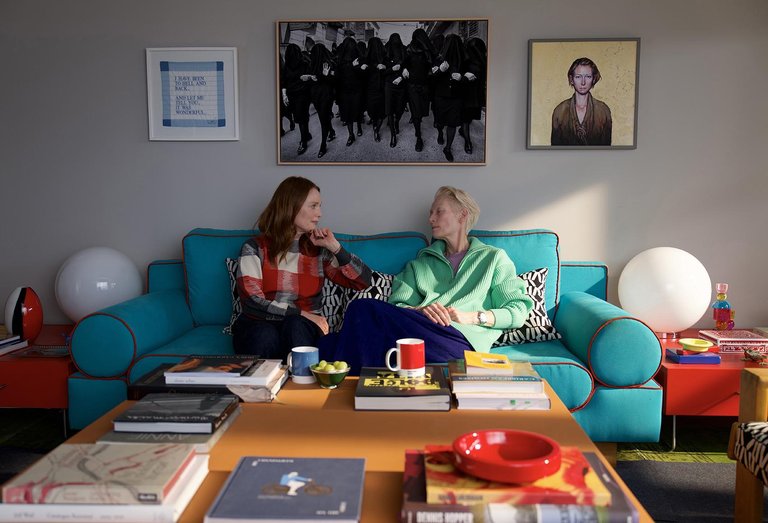 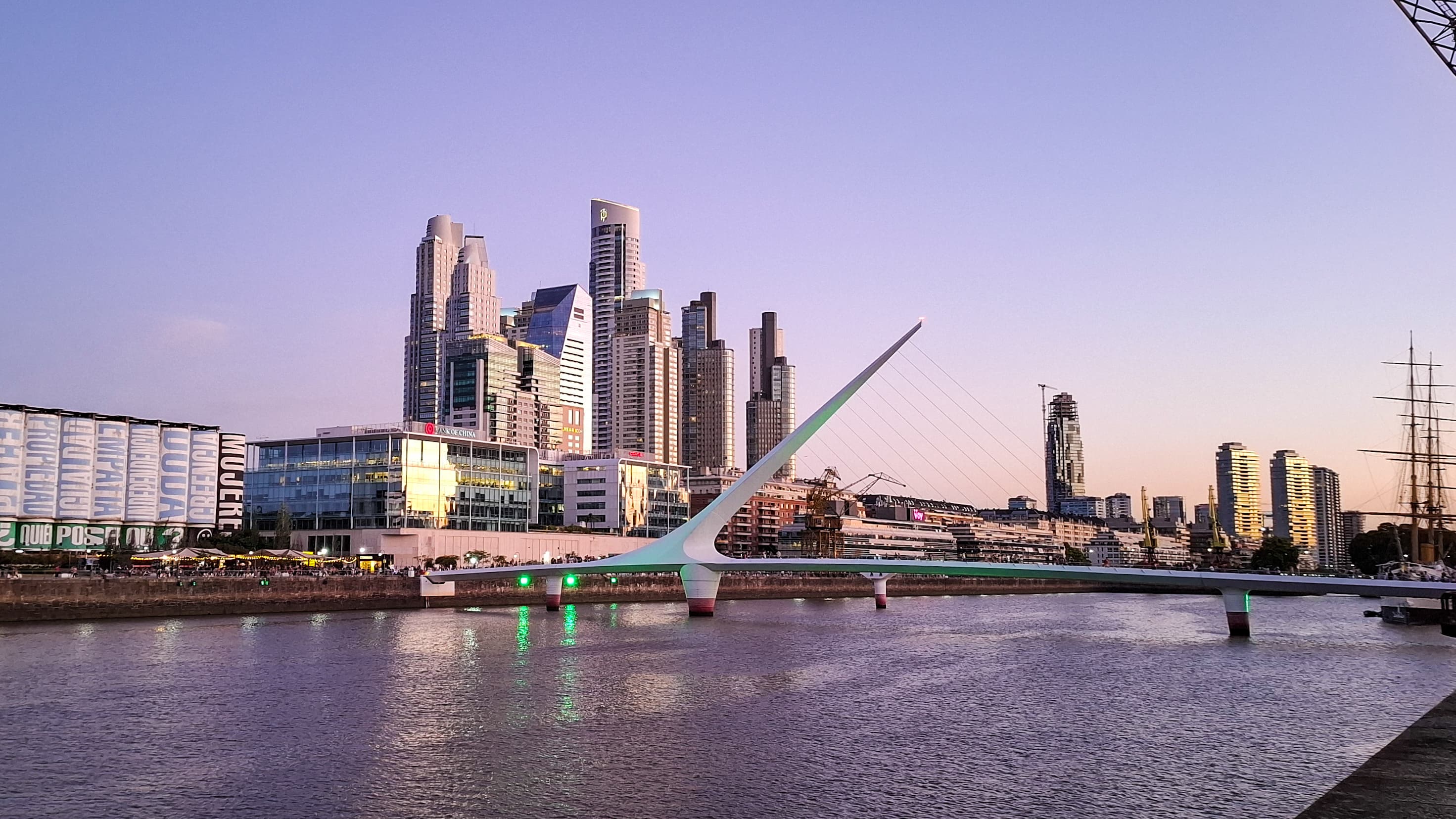 |
|---|
